By: debbie lynn elias
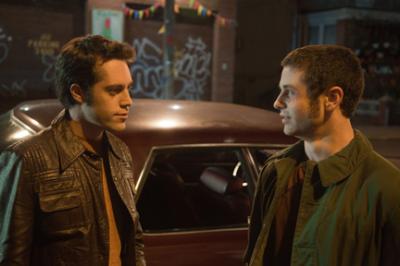
With the smoothness of the finest Irish whiskey, or the perfect froth of a heady Guiness, with WHITE IRISH DRINKERS, writer/director John Gray brings us a wonderfully introspective character study of not only individuals, but a community and ethnicity. Captured within the confines of mid-70’s Brooklyn in a white, Irish Catholic neighborhood, Gray is right on the money with not only semi-autobiographical touchstones to that specific community and his youth, but those similar up and down the Northeastern seaboard. Characters are complex and refreshing. The story, which has the traits of a caper movie and coming of age story woven together, is comfortable, surprising, entertaining and filled with emotion. Performances are deeply textured, filled with raw and compelling honesty and sensitivity. The sense of community and family resonates deeply, and the casual ease and camaraderie of friends played out against the backdrop of the neighborhood bar or family fighting and laughing around the dinner table, gives a warm sense of nostalgic wanderlust that fills the spirit.
The Learys are your typical Irish Catholic family. Dad is a longshoreman while Mom works part-time as a waitress. Even with two incomes, it’s tough making ends meet, but somehow Mom always gets a hot meal on the table. Clipping coupons is a necessity and are as valuable as gold. Dad has a hot Irish temper that is fueled by drink while Mom does her best to hold the family together, keep Dad calm and love her sons.
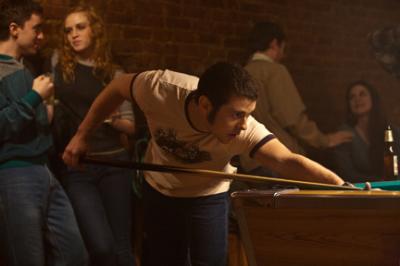
The family’s youngest son, Brian, is at a crossroads. Long out of high school, he’s at a loss as to what his future holds. A very talented artist, he hides himself and his work in the basement, constantly drawing and painting, but his beautiful work seems destined to remain in the basement and his talent closeted, as blue collar guys in 70’s Brooklyn didn’t dream of anything except staying blue collar and living in the community. Almost all of his friends are working civil service jobs or making a killing of $9,000 a year plus benefits as garbage collectors. But Brian doesn’t want to end up like them, just getting by, drinking beer and waiting for retirement in 50 years. He wants to live his dream. But, he also doesn’t want to lose their friendship like his best friend Todd did when he accepted a scholarship to Carnegie-Mellon, and became a mockery amongst the hometown guys. In the meantime, Brian holds down a part-time job at the local theater working for its long time owner Whitey.
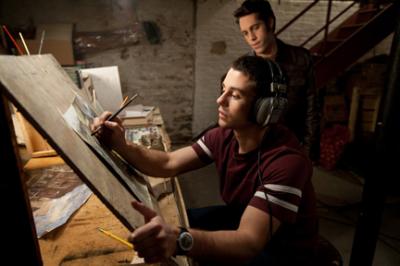
Brian’s older brother Danny is the black sheep of the family. Filled with more get rich quick schemes than you can shake a stick at, most of Danny’s ventures involve committing crimes, crimes in which he wants Brian to aid and abet. And although Brian doesn’t have the fortitude to follow Danny’s lead, he still loves his brother and looks up to him, no matter what the consequences.
Trying to avoid his father’s violent drunken outbursts, Brian spends most of his time (when not drawing) with Whitey. A dreamer himself, Whitey has been down on his luck with ticket sales steadily dwindling to the point that, unbeknownst to Brian, he has become indebted to a local loneshark. Yet, Whitey still hopes to turn the theater around. He just doesn’t know how. But Brian does. How about a rock ‘n roll show? Bring in some bands and you’ll sell out the house. Well, that just might work – especially since Whitey’s old pal just happens to be the road manager for the Rolling Stones. Working a deal for a one night only, unannounced performance by the Stones at Whitey’s theater before appearing at Madison Square Gardens, this might be the meal ticket for everyone. For Whitey, he could pay off his debt. For Brian, he would earn a bonus that could give him the freedom to leave town and go to college. And for Danny, well a heist of the gate would put him either behind bars or on Easy Street.
Nick Thurston simply shines as Brian. He has this great innocence and charm that illuminates the screen. Likeable to a fault, Thurston makes you root for Brian. You feel his pain, his frustration, his joy, his sorrow. And you remember what it was like to be at a similar crossroads in your own life.
But talk about a performance — Geoff Wigdor! A 21st century bad boy Tony Manero! Charismatic, textured, full bodied – killer portrayal of Danny. It’s impossible to look away when he’s on screen. And when he goes toe-to-toe with Stephen Lang’s Mr. Leary, the tone and character structure escalates, particularly when Wigdor balances tenderness in interactions with Karen Allen and the pure brotherly love he shows for Thurston’s Brian.
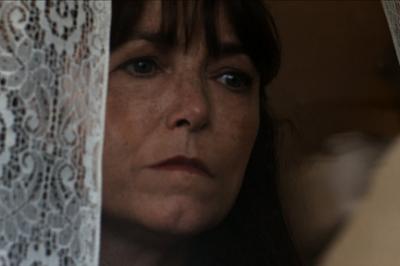
And what about Karen Allen as Mrs. Leary? This is a Best Supporting Actress Oscar or Spirit Award nominee right here. She bares it all as the downtrodden, fearful, yet loving wife and mother. She is raw emotion at its basest. But then we have to look at Peter Riegert! Whoa! Talk about a double edged performance. As Whitey, the friend, the father figure, the kindness and joy Brian doesn’t have at home, Riegert soars. But then, a complete character twist that hits you over the head like a sledgehammer. Brilliant. According to Riegert, “Whitey’s got something that makes him compelling and interesting and at the end of the day, his life is in jeopardy. It’s not overstated, but Whitey must have some [creative] quality. He runs a theater. It’s an interesting addendum to his nature. . . I think that what makes John’s writing good is that he understands the inconsistencies and contradictions of people. You have to think Darwin, not Disney. Whitey is fighting for his survival, too, and survival trumps almost everything.”
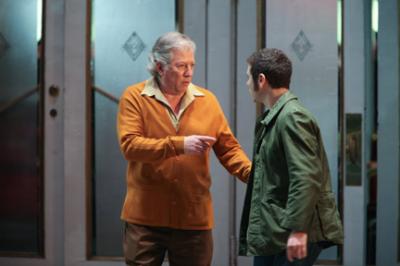
When talking about Whitey and his relationship with Brian, Riegert is passionate and reflective. “I think [Whitey] has an affinity for Brian. It depends on our respective ages, but when we’re younger we look up to mentors, father figures they are often called, and when you get older, it’s impossible to not see those who remind you of you when you were younger. There’s a simpatico between the two of them.”
Written and directed by John Gray, the story is semi-autobiographical of Gray’s youth and his own career crossroads. The script is a standout. Thoughtful. Well-told. The community camaraderie is exemplary and honest. The familial interactions ring true. Dialogue and vernacular is perfect. Always a fan of Gray’s telemovies, with WHITE IRISH DRINKERS he is elevated to one of my favorite screenwriters.
An authentic and beautifully captured film, not only with characters and setting, but also with the emotion, WHITE IRISH DRINKERS is a film described by star Peter Riegert as “unembarrassingly emotional. It’s not cynical or coy. It’s very passionate about who these people are.”
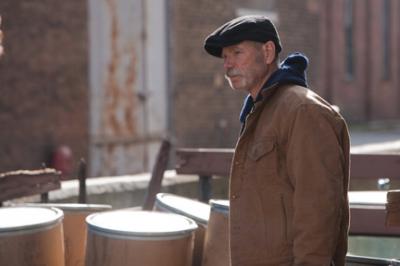
With the creation of Danny and Brian, in Gray’s writing, Riegert sees “the two brothers represent[ing] the two sides of us as human beings. We’re not only good or only bad. Everybody has both within them and sometimes one dominates the other to the bad. It’s telling the story humans through two characters who make up two sides of the same person. Brian’s character, in a way, is at war with himself. And just like he discovers [Danny’s] drawings at the end of the movie, I think is very smart. [Danny] also flirted with creativity but never could nurture it. Very smartly done on John’s part. A lot of literary imagery in a visual medium.”
As Gray likes to remind me, “We have some fun twists and turns. We like to emphasize that because people always tend to think, “Oh, character movie. It’s going to be so slow.” In some ways it’s kind of a caper movie.”
A long time devotee of film, Gray made the digital jump lensing with the Red HD camera, “which is something I had never done before”. Admittedly, “really nervous about it” Gray now admits, “It was great experience. It was just phenomenal. I was realized pleased with the look.” And as to the look, there is a complete visual immersion of the grit and grain of 1975 film. “My cameraman, Seamus Tierney, came up with the brilliant idea of using 40 years old lenses that were manufactured in the 70’s. I really believed that helped us take off some of that sharp super defined look that HD has and gave it a somewhat gritty look.”

A film self-financed by Gray, frugality was the watchword of the day. But, as I know first hand from my father and his 59 years in television, frugality also breeds creativity and with WHITE IRISH DRINKERS, there was an abundance of technical creativity at work. Giving kudos to his art department, Gray opines “The lesson that they taught me is …we don’t have the budget to go out there and shoot a big scene on the street. What you can afford are the little details to populate the apartment. The napkin holder, the telephone..all the little details. That’s stuff that you can pick up for pennies. Those are the things you try to concentrate on, more than trying to do a gigantic shot and build store fronts.” The attention to detail is impeccable, giving a strong reference point for not only the audience, but the performances themselves.
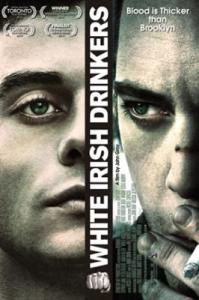
Limited resources also calls for limited people. Crediting for AD team for the theater scenes, “We only had 90 extras for one day. So we had to block shoot our big wide shots with 90 people. AD’s were brilliant at staging them in certain ways and creating levels of people. The illusion is that there is this depth of people.” Again – creativity.
Being a story of such a personal nature, Gray wanted to create “a sense of what that time was like, that place in time in the 70’s; [a] film that will resonate with people in terms of their own families and relationships, and more importantly, their own dreams that start to awaken in you when you’re a young person and you have to grapple with what is going to take to try and pursue this dream.”
An indie gem for 2011, and a frontrunner for a Spirit Award in February, John Gray is right on the money with his own pot of gold – WHITE IRISH DRINKERS.
Brian Leary – Nick Thurston
Danny Leary – Geoffrey Wigdor
Mrs. Leary – Karen Allen
Whitey – Peter Riegert
Mr. Leary – Stephen Lang
Written and Directed by John Gray.












